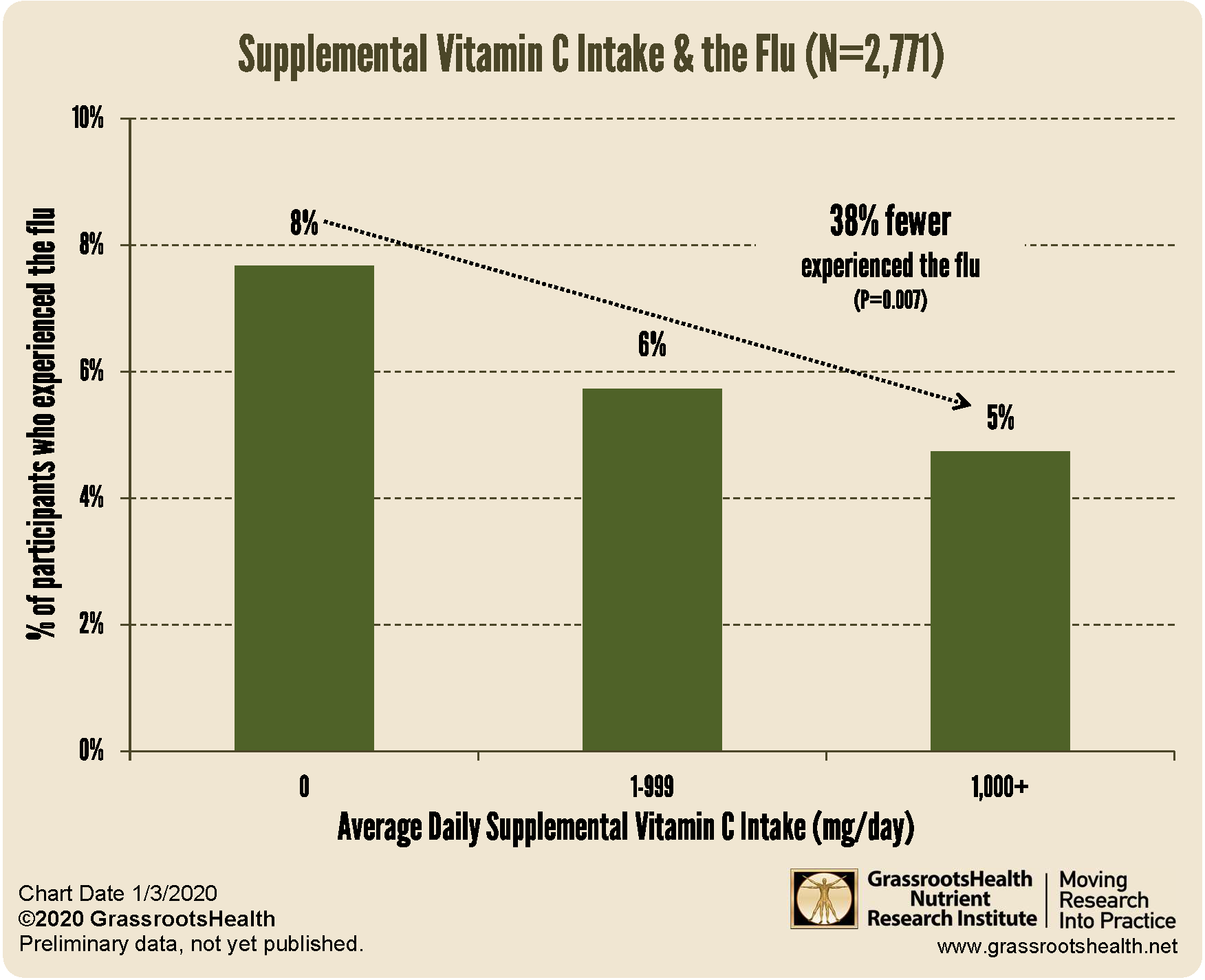Published on January 7, 2020
 In an earlier post we showed that fewer GrassrootsHealth participants who reported taking supplemental vitamin C experienced the flu compared to those who did not. Today, we’ll explore how the amount of supplemental vitamin C intake affects flu incidence.
In an earlier post we showed that fewer GrassrootsHealth participants who reported taking supplemental vitamin C experienced the flu compared to those who did not. Today, we’ll explore how the amount of supplemental vitamin C intake affects flu incidence.
Using the data you provided for the GrassrootsHealth study, we assessed the effect of supplemental vitamin C intake amount on the occurrence of the flu. We found that the percent of participants who experienced the flu in the prior 6 months was 38% lower for those who reported taking 1,000 mg or more of supplemental vitamin C per day on average compared to those who reported no supplemental vitamin C intake.
This preliminary analysis suggests that taking supplemental vitamin C could reduce the risk of experiencing the flu, with higher intakes associated with greater reduction. Further analysis is needed to assess this association by adjusting for other biometric and lifestyle risk factors.
In a future blog post we will explore the combined effect of vitamin C supplemental intake amount and vitamin D status on the flu.
Vitamin D, omega-3s, magnesium, and other nutrients are important to measure!
Make sure you know your vitamin D level, and take steps to keep it within a target of 40-60 ng/ml or 100-150 nmol/L! Through GrassrootsHealth Nutrient Research Institute, you can also test your essential elements magnesium, copper, zinc and selenium, toxins such as lead, mercury and cadmium, as well as your omega-3 levels, inflammation levels and thyroid stimulating hormone (TSH) level. Find out your levels today! Log on to the test selection page (click the link below) to get your tests and see for yourself if your levels can be improved.
Make sure you track your results before and after, about every 6 months!
How can I track my nutrient intake and levels over time?
To help you track your supplement use and nutrient levels, GrassrootsHealth has created an online tracking system called myData-myAnswers. For each specific supplement, you can track what days you take it, how much, and many other details. This will help you know your true supplemental intake and what patterns of use work for you to reach and maintain optimum nutrient levels. Check it out today!







